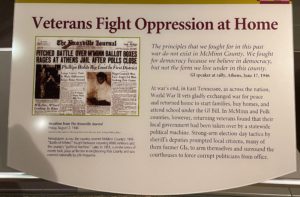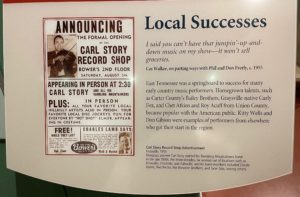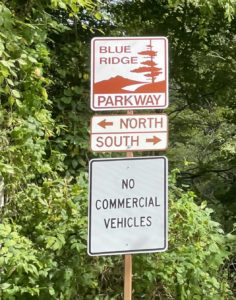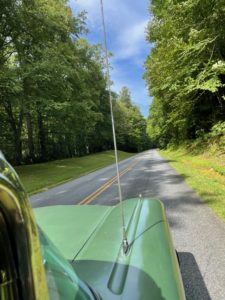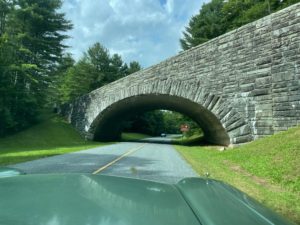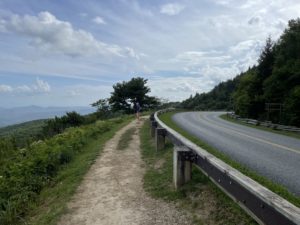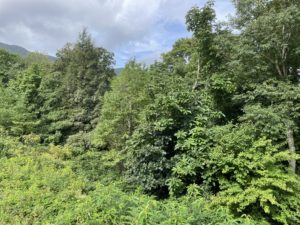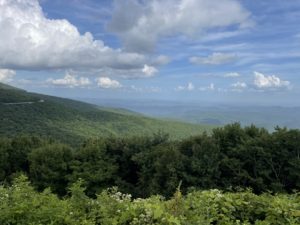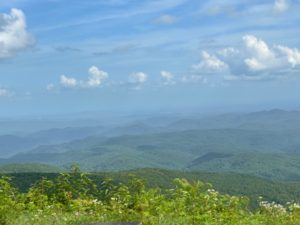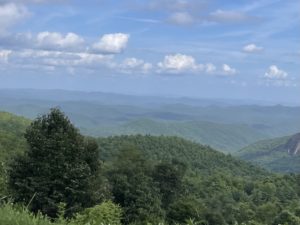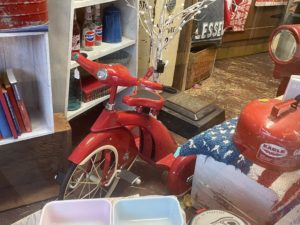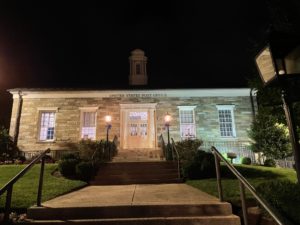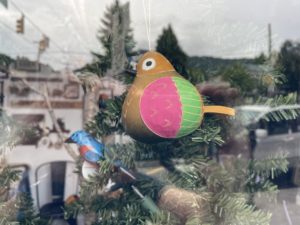In which Sid and Doris enjoy another fine town museum and find Appalachia.
At breakfast we learn more about the relaxed attitude to time in Tennessee. How long can this take to cook? thinks Sid. He is not very relaxed. Although he does have time for the museum but could have had more.
Knoxville and East Tennessee were very split between Unionists and Confederates (but Tennessee joined the Confederates). This meant that not only did they suffer the effects of the formal warfare but constant fighting among neighbours and families.
After the war the town industrialised quickly with over 100 factories by 1,890. Welsh immigrants from Pennsylvania came to work in the iron works. The city grew fast but by 1,900 was still only 33,000 souls. The 1,930’s depression hit the region badly with much of the relief coming from the Tennessee Valley Authority.
The museum is both enjoyable and informative. Sid’s photographed information board is on the fight against corrupt politicians; Doris’s is on the hard-fiddlin’ foot tappin’ traditional Appalachian country music and a view of a local commercial radio station that it “won’t sell groceries”. At last, the music we were looking for in Nashville.
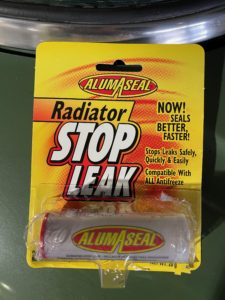 When we get down to the car it is clear the external radiator bodge has not taken so in goes the Alumaseal and water to get the level above the leak. We then drive for a half hour before stopping for fuel. Both Sid and Doris take a secret peak under the front of the car.
When we get down to the car it is clear the external radiator bodge has not taken so in goes the Alumaseal and water to get the level above the leak. We then drive for a half hour before stopping for fuel. Both Sid and Doris take a secret peak under the front of the car.  The magic powder may have worked.
The magic powder may have worked.
Then the day is about getting up to Boone, named after 18th century pioneer Daniel Boone. Navigator Doris first puts up a dull but straightforward route.
But this seems a bit too dull, so we switch to smaller roads climbing up into the Appalachians, past a large and somewhat surprising Trump poster (this version is from the Internet, but it is the same poster).
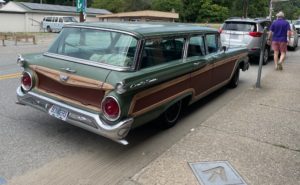
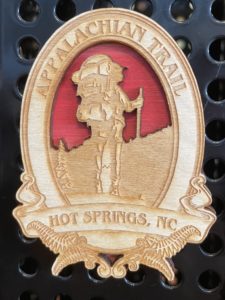 Just into North Carolina the find of the day may be Hot Springs because the town is on the Appalachian Trail which stretches from Georgia to Maine, the longEST hiking-only trail in the world. Sid and Doris walk a whole 200m of the AT down Main Street to the railway to find a great ice cream lunch. Doris works out that the server, who has regularly walked the whole length of Main Street since she was 3, has effectively covered the length of the 2,193 miles of the AT in Hot Springs itself.
Just into North Carolina the find of the day may be Hot Springs because the town is on the Appalachian Trail which stretches from Georgia to Maine, the longEST hiking-only trail in the world. Sid and Doris walk a whole 200m of the AT down Main Street to the railway to find a great ice cream lunch. Doris works out that the server, who has regularly walked the whole length of Main Street since she was 3, has effectively covered the length of the 2,193 miles of the AT in Hot Springs itself.
Doris finds the Blue Ridge Parkway which could take us all the way to Roanoke if we wanted it to. The speed limit along here is 45mph and there are no commercial vehicles or traffic lights. The parkway is insulated from nearby roads which are carried on elegant stone bridge. Even so the average speed is probably about 30mph and that is working at keeping up the speed which requires tiring amounts of concentration. This is a driving experience which Sid describes as trying to thread a frayed bit of darning wool through the eye of a sewing needle.
As we drive we can see trees and more trees, of many different sorts. As Bill Bryson found, on the AT you mostly get to see trees. When Sid stops for a high viewpoint at Banner Elk (we did not make that up) we can see the hills rolling away, covered with trees and more trees of more different sorts.
Pretty as all this is we cannot make the distance we need, so tomorrow will have a few more of those long straight road pictures.
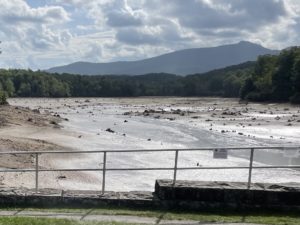 At Marshall just before we get into Boone we cross a causeway. We have seen dried up drought dried reservoirs on our trip but this lake seems to have suddenly been drained. A small mystery.
At Marshall just before we get into Boone we cross a causeway. We have seen dried up drought dried reservoirs on our trip but this lake seems to have suddenly been drained. A small mystery.
Boone is part of a ski region. It is determinedly Appalachian though we find no banjo music. We get in a bit late so may have missed the best bits but we see a hobby railway, a shop window of nostalgia, a smart Post Office and a blameless pizza shop.
As Yoga Berra may have said ‘It gets late early around here’ and we are soon back in The Horton Hotel. If you are ever in Boone it is a good place to stay.
Tomorrow we have a choice of route – on the Blue Ridge parkway with the trees, or through an increasingly inhabited region which will have many of those very… very… long period traffic lights. Signs tell us that you are not permitted to use cell phones when driving but maybe we can pack some light reading for the traffic lights.
